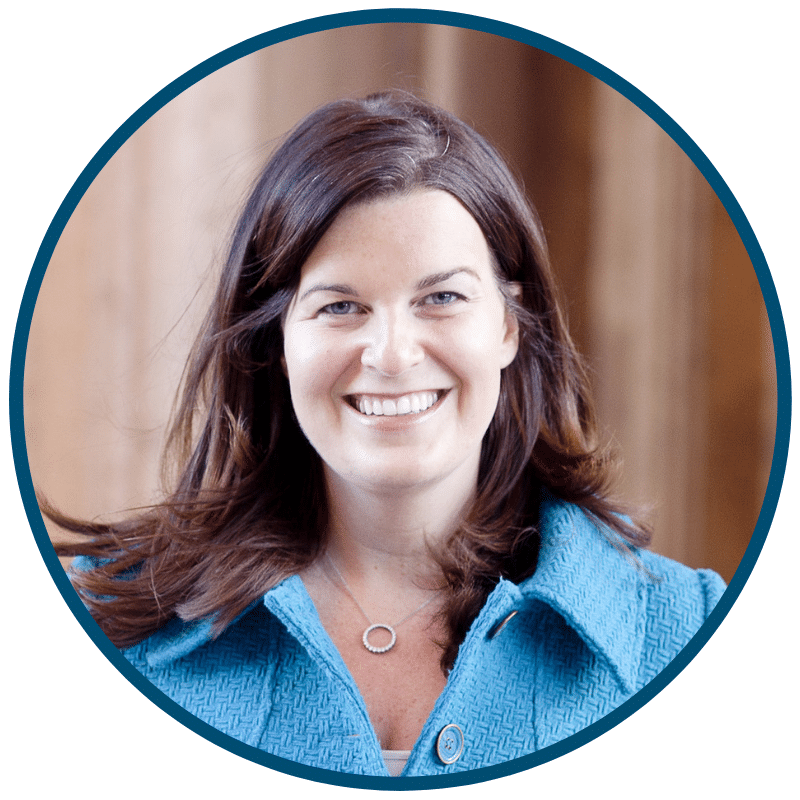How Nonprofits Are Rethinking Membership Programs
Posted December 16, 2020
We recently spoke with professionals at a diverse range of nonprofits about the challenges and opportunities their membership programs have faced during the past year and how they're adapting for the months ahead...

Bridget Keane
Chief Development Officer, Boston Athenaeum
On the pandemic’s impact on the Boston Athenaeum’s membership program and how they have adapted…
Our experience has been the same as that of most of our peers: as people evaluate their personal financial expenditures in a time of uncertainty, we’ve lost members. However, we are buoyed that renewals have often been accompanied by an additional gift to the annual fund with a sentiment that their membership was as much an act of philanthropy as a transaction.
Our biggest challenge has been ensuring that the sense of community at the core of the membership offering endures and serves the current needs. Within ten days of closing, we offered the first of our virtual programs and initiated a new, weekly email communication. This required mindset shift, a technology lift, and cross-departmental collaboration. Led by the Events team, a group effort among IT, Marketing, Membership, Education, and Curatorial created a robust calendar of events that could easily translate the value proposition of the BA into a virtual environment.
Expanding our audiences through virtual programming opened up a whole new way for people to be a part of the Athenæum community regardless of their proximity to Beacon Hill. We have been able to experiment with ways to deliver our content and provide access to our collections. In the early days of the pandemic, the Development team made phone calls to many of our members, just to check in with a friendly voice and let them know about our virtual programs. The personal connection is one of the things our members value most—especially at such a particularly vulnerable time.
In so many ways we have been able to innovate in the way we do things. We feel liberated to try new approaches, whether or not they will ultimately stick. The pandemic has increased everyone’s comfort with technology; the “curbside” pick up of books, along with a book mailing service, allow members to not miss the latest title; and we implemented Day Passes for non-members wanting to use the library and experience four different walls. In addition, we launched a new quasi-membership category, the Virtual Event Season Pass. Finally, we’ve succeeded in reaching new audiences through pragmatic partnerships with Boston-area professional classical ensembles, many of whom were locked out of their practice stages at local universities and conservatories. With our Long Room dark and all BA events moved online, we could offer groups like A Far Cry and HUB New Music Ensemble a space for video shoots and livestreams, and work on building bridges in new and unexpected directions.
On the significant role membership plays in their overall fundraising strategy…
Our members form the essential community that defines the institution. In addition to using the BA as a workspace for their own projects, they engage in our programs, support the Annual Fund, sponsor conservation and collections initiatives, and underwrite special exhibitions. Though some may argue that a membership is merely a fee for a service, we see it differently, as a mark of deep understanding of the role of cultural institutions in our city, an affirmation of the importance of the humanities, dedication to the pursuit of knowledge and fostering dialogue, and preservation and interpretation of cultural history. This year, our members responded to our Annual Fund generously and we oversubscribed our philanthropic goal by 15%.

Amanda Burris
Membership Manager, Storm King Art Center
On the pandemic’s impact on Storm King Art Center’s membership program and how they have adapted…
Storm King Art Center’s Membership program was initially impacted negatively by the pandemic, like so many arts and culture organizations. The Art Center was closed for three months, and during that time, lost 25% of the Membership base. However, once Storm King’s opening was publicly announced, Membership immediately began to grow. By the time the grounds opened for Member Week on July 8, Storm King had regained 19% of its Member base.
State-mandated capacity restrictions, coupled with an increased desire to seek outdoor cultural experiences, created an unanticipated uptick in the volume of people interested in becoming Storm King Members. We’ve experienced exponential growth with our Membership base, which has more than doubled since 2019, and has almost tripled since we announced our opening on June 26. The dramatic increase in the demand for Membership has been the biggest operational hurdle we’ve faced, although we acknowledge that it is a very welcome hurdle! Providing our standard level of personal responses to Member inquiries, as well as helping Members find opportunities to visit Storm King under the current capacity restrictions and new process of reserving advance tickets for entry, have been challenging.
We’ve had opportunities to re-examine Member benefits this year, since we were unable to host our traditional in-person events on Storm King’s grounds. We’ve implemented new, weekly Member Mornings and also provided Members with early access to timed-entry tickets. We’ve also offered monthly, virtual programming for Members. Virtual programming has been a wonderful way to connect and foster a sense of community amongst our Members, who have attended from a much broader geographic range than our traditional in-person events. We’ve found that this format also provides a unique, shared experience, sparking engaging conversations and personal touchpoints between Storm King staff, Members, and their families.
Storm King received fantastic press coverage this year—including reviews in The New York Times and The New Yorker, which attracted both Members and visitors alike. We implemented a Member Week the first week we opened the grounds in advance of our public opening, as a way to say thank you and show our gratitude to our supporters. Member Week also attracted many new Members as well. In order to retain our Members, we’ve focused on providing as much personal assistance as possible to help Members secure a ticket to visit Storm King, so they can make use of the most popular Member benefit, free admission. We’ve enlisted Storm King colleagues to assist us in responding to emails and phone calls, and the Membership team, comprised of two, has shifted schedules to be available for Member inquiries seven days a week. We also expanded our monthly Member Mornings, to open the grounds exclusively to Members once a week. Maintaining a growing Membership base during a time with such significant capacity restrictions prompted us to review and analyze the Membership program ROI, demographics, and admission costs, data which is useful for informing decisions surrounding our Member benefits going forward.
On the significant role membership plays in their overall fundraising strategy…
Membership plays a critical role in Storm King’s fundraising strategy. The general Membership program allows us to make new connections with visitors who we know are enthusiastic about the Art Center and want to be further involved or contribute to the organization. As we forge relationships with our general Members, we steward those who express a desire to become more committed to join our Council program and become long-term contributors to the Art Center. We also conduct research to pinpoint general Members who have the capacity and interest to become future major donors, project or event supporters, or even future Trustees. It’s a gradual process, but it is rewarding when we are able to build deep and meaningful relationships for Storm King through an initial general Membership gift.

Jan O'Neil
Director of Membership and Annual Fund, Mass Audubon
On the pandemic’s impact on Mass Audubon’s membership program and how they have adapted…
At Mass Audubon we are incredibly fortunate to have a committed and generous statewide base of more than 135,000 members and friends, but like our peers, we have experienced a year like no other. The onset of the pandemic in March resulted in the temporary closure of our wildlife sanctuaries, and the timing could not have been worse. Spring is by far our busiest season and onsite recruitment – fueled by direct mail, advertising, and social media – is our largest channel. Free admission is consistently ranked by members as our top value-based benefit, followed by discounts on summer camps and programs hosted by the sanctuaries, and having these severely impacted presented challenges for retention as well as acquisition.
First-year members are more transactional and difficult to renew, and multi-years are our core supporters, so keeping renewals on schedule was essential. We used this as an opportunity to test mission-focused messaging, and were honest about the impact of COVID-19 on revenue and the urgency of their continued support. Our members responded well to both. A robust Auto Renew program built over time also helped, with more than 20% of our renewal payers currently enrolled. Though we experienced some decline in both segments it was less than we had initially feared. And with strict safety protocols in place we were able to keep our membership office open for dues processing, card fulfillment, and customer support, avoiding interruptions in core services that could have impacted future renewals.
Especially with retention trending down we could not afford to suspend recruitment for long. As soon as our sanctuaries re-opened (albeit with state guidelines limiting visitation at several of our most popular sites) we resumed outreach to lapsed members, and recovered many during the summer months. With the arrival of fall we ventured back into acquisition, mailing to control lists with proven online response rates and omitting those that drive primarily onsite joins, a tactic we’ll repeat and expand upon in spring 2021. And though email and social have long been part of our strategy, we increased the number and frequency of hits, which helped drive a surge in online memberships.
On the significant role membership plays in their overall fundraising strategy…
Membership is Mass Audubon’s largest source of unrestricted income, and the broad base of Mass Audubon’s philanthropic pyramid. Also managed by the Membership department, annual giving is the next tier, and is a feeder channel for major and planned giving. In 2020 we continued to mail appeals, and also increased the number of email appeals and digital fundraising activities. In fact, we achieved a new high-water mark on Giving Tuesday with a fully digital campaign, raising over $95,000 including a $20,000 challenge match.

John Mace
Membership Director, Union of Concerned Scientists
On the pandemic’s impact on Union of Concerned Scientist’s membership program and how they have adapted…
Operationally the largest impact we saw because of the pandemic was in the timing of our online appeals. In the early spring we decided to move a couple of our email fundraising campaigns forward a couple of months. Although we weren’t seeing a reduction in support at that time we were concerned that as the pandemic went on and its economic effects became more pronounced, we may have seen a softening in giving later in the year; we wanted to capture as much support as possible while we knew our donors wanted to make gifts. We didn’t make any change in the timing of our off-line direct mail appeals. At the end of the year the only effect we seem to have seen was to move some of our revenue to earlier in the year; overall giving didn’t seem to be affected.
I think our largest challenge as fundraisers has been to try and forecast the effects of the pandemic. This has been a truly unprecedented event. We had no idea exactly how it would affect us, what the best ways were to address it in our messaging, and how we should adjust budgets to account for it.
As for opportunities, the only one that stands out to me is learning different ways of accomplishing the work, i.e. moving to a totally remote work model. I had been a stalwart hold-out against staff who wanted to have some flexibility in where they worked. I’ve come to see that it is possible to have success when everyone is working remotely. Some of our staff have come to see it as a preferred way of working, while others would still prefer to have the face-to-face contact that an office environment offers. In the end I can see organizations maybe offering a hybrid model where staff can choose to work in an environment where they can be most productive.
Because one of the issues we work on is the respect for and defense of scientists and the role of science in policy making, we’ve been able to develop messaging around how the government has developed policies to confront the pandemic. At the same time we’ve continued to talk about the other issue areas we work in. Over the past six months messages about our core issues (climate change, clean energy and transportation, equitable food policies, the threat of nuclear war) have made up the majority of topics we’ve used in online and off-line fundraising efforts.
The largest surprise I’ve had is that our support has held steady. Our donors have been able to be concerned about the pandemic while keeping a place in their thoughts for UCS.
On the significant role membership plays in their overall fundraising strategy…
UCS has established diverse channels for fundraising, and we view each channel as a separate but mutually-supporting way to interact with supporters. Over the long term we expect Membership (which we view as our annual giving program), Major Gifts, Foundations, and increasingly Planned Giving to provide roughly equivalent levels of support. At the same time we recognize that market/economic/political factors will affect how each channel performs on a short term year-to-year basis. If one channel has an off year we usually see one or more of the other channels offset that.
Membership is definitely the “ground floor” of our individual supporters’ interaction with UCS. Many, if not most, of our major donors have moved up the ladder from Membership through our mid-level giving program and into major donor status. We have a successful mid-level giving program, and we actively coordinate with our major gift staff to make sure that they’re aware of any donors we feel are potential major donors. At the same time we’re happy to take on any major donor prospects who are more appropriate in our mid-level program.

Joyce Grippen
Director of Development, French Cultural Center
On the pandemic’s impact on the French Cultural Center’s membership program and how they have adapted…
Our membership has declined by 12% since March. The greatest challenge has been retaining members who joined to learn French and French culture in our Back Bay brownstone. This atmosphere found in our building is difficult to recreate on zoom. To make it more challenging (but exciting), our trustees decided to use this “opportunity” to completely renovate our building. Construction has begun and will be complete in January 2022.
How they’ve adapted…
We continue to be uplifted by our members and their passion for our Francophile community. Our classes and programs were on-line within a week, and those members and students who acclimated to the on-line experience have stayed with us. In fact, we are providing more classes and programs now than we were when our building was open. People are looking for connection and our mission is to provide it, whether in person or on-line.
Through a concerted social media effort, we have been able to attract participants from outside the Metro Boston area and have already made the decision to continue with on-line classes and programs when our building re-opens.
In the past two years we have implemented strategies to integrate our membership and fundraising strategies, through increased member communication and involvement. We are on target to raise 35% more in annual fund donations this year. The pandemic has helped our members realize the importance of the French Cultural Center community and they have shown their passion by their support.

Teri Morrow
Director of Membership & Community Giving, Appalachian Mountain Club
On the pandemic’s impact on Appalachian Mountain Club’s membership program and how they have adapted…
Overall, our membership program is down for 2021. That’s not a huge surprise. Our outdoor trips and activities were canceled from late March thru early July. Our lodging facilities, where members get up to 20% off their overnight stay, were also closed; those that have re-opened have done so on a limited basis. Twenty-five percent of our new members each year come from people who stay with us. At the same time, the bedrock of our membership, our 2+ year members, remain incredibly loyal. When we told them we needed their support more than ever this year, they renewed their memberships and provided additional support for our annual fund.
AMC overall has taken a number of steps to retain members. With help from our volunteer relations team, local chapter volunteers began offering outdoor skills and leadership training online. Staff are reaching out to members with a recently expired membership and asking them to renew. We also created a new publication to share news, information, and inspiration with our members and donors. The format is a high quality 17 x 21 pre-printed and folded broadsheet. It features personalized messaging based on the recipient’s relationship with AMC. We won’t know the full impact of these efforts until 2021.
On the significant role membership plays in their overall fundraising strategy…
Members are the base of our fundraising efforts and most of our donors are active members. In addition to membership, my team is responsible for donors who give less than $1,000 annually; and we actively work with the development team on soliciting $1,000-9,999 via direct mail. We coordinate appeals with our giving society officer and Chief Development Officer to make sure messaging is consistent. We also consult with major gift officers to insure the right major donors are getting each appeal.

